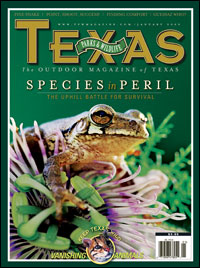
Flora Fact : Fever Maker
Loathed for its allergy-triggering pollen, the Ashe juniper also feeds birds and provides nest material.
By Sheryl Smith-Rodgers
Mountain cedar - ah, say the name, then stand back because a debate's sure to start. Both loathed and loved, the prolific and tenacious Ashe juniper (Juniperus ashei) occurs on limestone hills across Central Texas as an evergreen shrub and tree.
Historically, the native species - named for pioneer botanist William Willard Ashe - once grew beyond the reach of wildfires in limestone canyons and other rocky places. With the arrival of settlers came overgrazing and fewer fires, which enabled junipers (commonly known as mountain cedar) to spread. Back then, people also cleared many old-growth trees for use as fence posts, house piers and firewood.
It's believed that junipers - via their shallow lateral roots - absorb more water than other plants in a habitat. Their dense canopies and leaf litter also keep moisture and sunlight from reaching the ground. Thus, little grows beneath their branches. In winter months, mature male trees (10 years of age or older) turn golden and release pollen, the cursed culprit that triggers cedar fever. Birds and mammals relish the small blue berries found on female trees. Golden-cheeked warblers use the long, stringy bark of old-growth Ashe junipers for nests.
FYI: Ashe junipers serve as "nursery trees" for a few natives - such as Texas madrones and cedar sage - by protecting them from browsing deer. Also, some bonsai enthusiasts style the species into living works of art.

